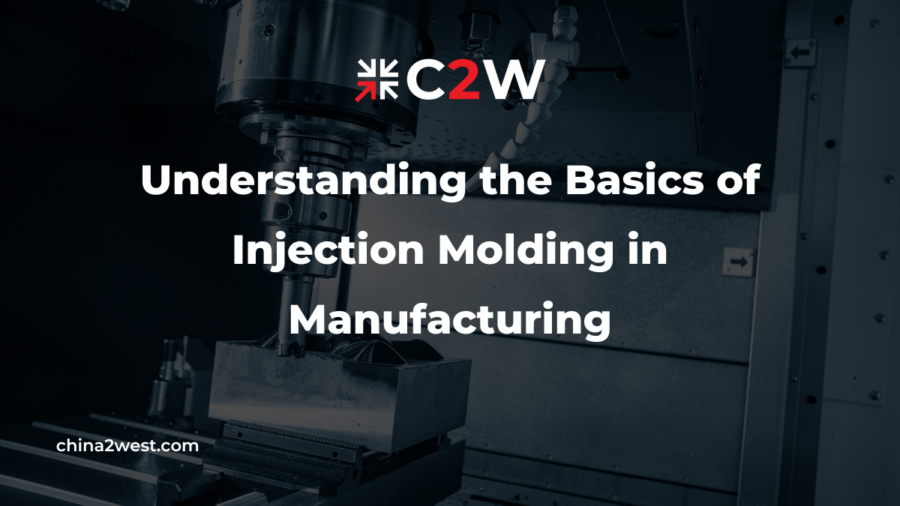In the realm of modern manufacturing, injection molding stands tall as a widely adopted and revolutionary process, transforming raw materials into an extensive array of plastic products that shape our everyday lives. From intricate medical devices to household items and automotive components, injection molding plays a pivotal role in delivering precision, efficiency, and cost-effectiveness to the production process.
This blog delves deep into the fundamentals of injection molding, unraveling its intricacies and shedding light on its significance within the manufacturing landscape. Let’s dive right in.
What is Injection Molding?
Injection molding is a widely used manufacturing process that involves the creation of plastic parts and components. This process is popular in many industries due to its versatility and cost-effectiveness. The process involves melting plastic material and injecting it into a mold. Once the plastic cools and solidifies, the mold is opened, and the part is ejected.
Injection molding is a vital process for manufacturing in China, where it is used to create a wide range of products, including toys, automotive components, medical devices, and more. The process is ideal for high-volume production runs, as it allows for the creation of complex parts quickly and efficiently.
Injection molding has become an essential tool in modern manufacturing, offering high levels of precision and repeatability. This process allows manufacturers to create parts with a high degree of accuracy and consistency, which is essential in many industries. In addition, injection molding is a cost-effective way to produce plastic parts at scale, making it a popular choice for manufacturers looking to keep costs low while still producing high-quality products.
How Does Injection Molding Work?
Injection molding is a complex and precise process that requires a deep understanding of the materials, machinery, and techniques involved. Here’s a brief overview of how injection molding works:
1. Material Selection
The first step in the injection molding process is selecting the appropriate plastic material for the desired part. Different plastics have different properties, such as flexibility, durability, and heat resistance, which need to be considered.
2. Melting and Injection
The selected plastic material is then melted in a heated barrel. Once melted, it is injected into a mold cavity through a nozzle at high pressure. The mold is carefully designed to create the desired shape and structure of the part.
3. Cooling and Solidification
As the melted plastic is injected into the mold, it rapidly cools and solidifies. Cooling channels within the mold help speed up this process. Once cooled, the part retains its shape and is ready for removal from the mold.
4. Ejection
After the plastic has solidified, the mold is opened, and the part is ejected. Ejector pins or plates help push the part out of the mold. This step is crucial to avoid any damage to the part or the mold.
5. Inspection and Finishing
Once the part is ejected, it undergoes a thorough inspection to ensure it meets the required specifications and quality standards. Any excess plastic or imperfections are trimmed or removed, and the part may undergo additional finishing processes, such as painting or polishing, depending on its intended use.
Advantages of Injection Molding
Injection molding has numerous advantages, making it a popular choice for manufacturing plastic parts and components. Firstly, it is a cost-effective manufacturing process, as it involves high-volume production with minimal waste. This is particularly beneficial when producing complex and intricate designs, where traditional manufacturing techniques would require more time and resources.
Furthermore, injection molding provides consistent and high-quality output, ensuring product consistency and reducing the likelihood of defects. The process is also highly efficient, with fast production cycles allowing for quicker turnaround times.
In addition, injection molding can be easily scaled to meet the demands of mass production. Many manufacturers in China rely on injection molding for large-scale production of plastic parts, components, and products. It also allows for the use of a wide range of materials, including composites and engineering plastics, providing greater flexibility in product design and functionality.
Common Applications of Injection Molding
Injection molding is a versatile manufacturing process that can produce a wide range of plastic parts and components. It is used across different industries and sectors, including automotive, electronics, consumer goods, and medical devices.
In the automotive industry, injection molding is used to produce interior components such as dashboards, door panels, and armrests. It is also used to manufacture exterior parts like bumper covers, spoilers, and grilles.
The electronics industry relies on injection molding to produce enclosures, housings, and connectors for various devices such as smartphones, laptops, and game consoles.
Injection molding is also widely used in the production of consumer goods such as toys, kitchenware, and home appliances. For example, plastic containers, cups, and bowls are commonly made using injection molding.
The medical device industry uses injection molding to produce various components such as syringes, vials, and inhalers. The process allows for the production of high-quality, sterile products with tight tolerances and precise dimensions.
Work With a Manufacturing Company in China
Understanding the basics of injection molding is essential for anyone involved in the manufacturing industry. Injection molding is a versatile and efficient process that allows for the mass production of high-quality, complex plastic components with remarkable precision. Throughout this blog, we have explored the key components of the injection molding process, including the mold, the machine, and the thermoplastic material. We have also examined the various stages of the process, from material preparation to the ejection of the final product.
For companies seeking reliable injection molding services in China, China 2 West stands as a trusted British-owned and operated manufacturing consultancy since 2005. With our experienced team, we are committed to providing the expertise and support needed for the success of your production project. Don’t hesitate to contact us today and discover how we can help you achieve your manufacturing goals.


